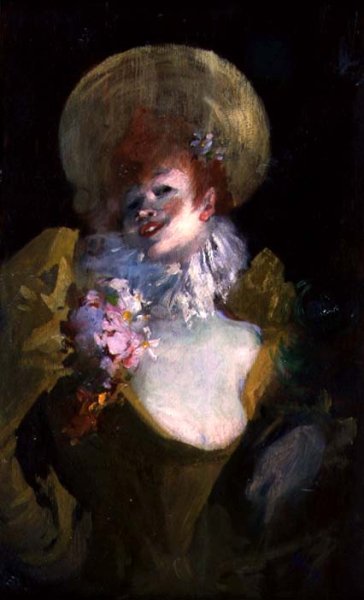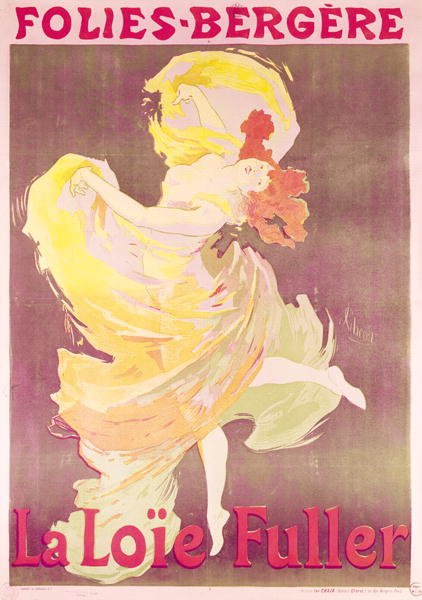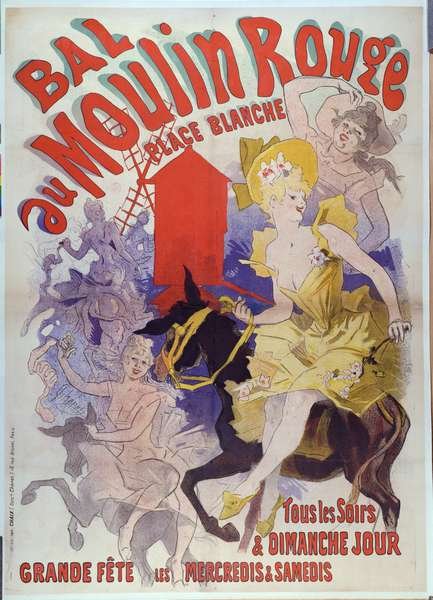Jules Cheret Biography In Details
Youth

Jules Cheret born in Paris to a poor but creative family of artisans, a lack of finances meant Jules Cheret had a very limited education. At age thirteen, he began a three-year apprenticeship with a lithographer and then his interest in painting led him to take an art course at the Ecole Nationale de Dessin. Like most other fledgling artists, Cheret studied the techniques of various artists, past and present, by visiting Paris museums.
He was trained in lithography in London, England, from 1859 and 1866, and there he was strongly influenced by the British approach to poster design and printing. On returning to France, influenced by the scenes of frivolity depicted in the works of Jean-Honore Fragonard and other Rococo artists such as Antoine Watteau, Cheret created vivid poster ads for the cabarets, music halls, and theaters such as the Eldorado, the Olympia, the Folies Bergères, Theatre de l'Opera, the Alcazar d'Ete and the Moulin Rouge.
So much in demand he was, that he expanded his business to providing advertisements for the plays of touring troupes, municipal festivals, and then for beverages and liquors, perfumes, soaps, cosmetics and pharmaceutical products. Eventually he became a major advertising force, adding the railroad companies and a number of manufacturing businesses to his client list.
Father of the women's liberation

As his work became more popular and his large posters displaying modestly free-spirited females found a larger audience, pundits began calling him the "father of the women's liberation." Females had previously been depicted in art as prostitutes or puritans. The women of Cheret's posters, joyous, elegant and lively - 'Cherettes', as they were popularly called - were neither. It was freeing for the women of Paris, and lead to a noticeably more open atmosphere in Paris where women were able to engage in formerly taboo activities, such as wearing low-cut bodices and smoking in public. These 'Cherettes' were widely seen and recognised, and a writer of the time said "It is difficult to conceive of Paris without its 'Cherets' (sic)."
In 1895, Cheret created the Maîtres de l'Affiche collection, a significant art publication of smaller sized reproductions featuring the best works of ninety-seven Parisian artists. His success inspired an industry that saw the emergence of a new generation of poster designers and painters such as Charles Gesmar and Henri de Toulouse-Lautrec. One of his students was Georges de Feure.
Late years

In his old age Jules Cheret retired to the pleasant climate of the French Riviera at Nice. He died in 1932 at the age of ninety-six and was interred in the Cimetière Saint-Vincent in the Montmartre Quarter of Paris.
He was awarded the Legion d'honneur by the French Government in 1890 for his outstanding contributions to the graphic arts. Although his paintings earned him a certain respect, it was his work creating advertising posters, taken on just to pay his bills but eventually his dedication, for which he is remembered today.
In 1933 he was honored with a posthumous exhibition of his work at the prestigious Salon d'Automne in Paris. Over the years, Cheret's posters became much sought after by collectors from around the world. (From Wikipedia)




